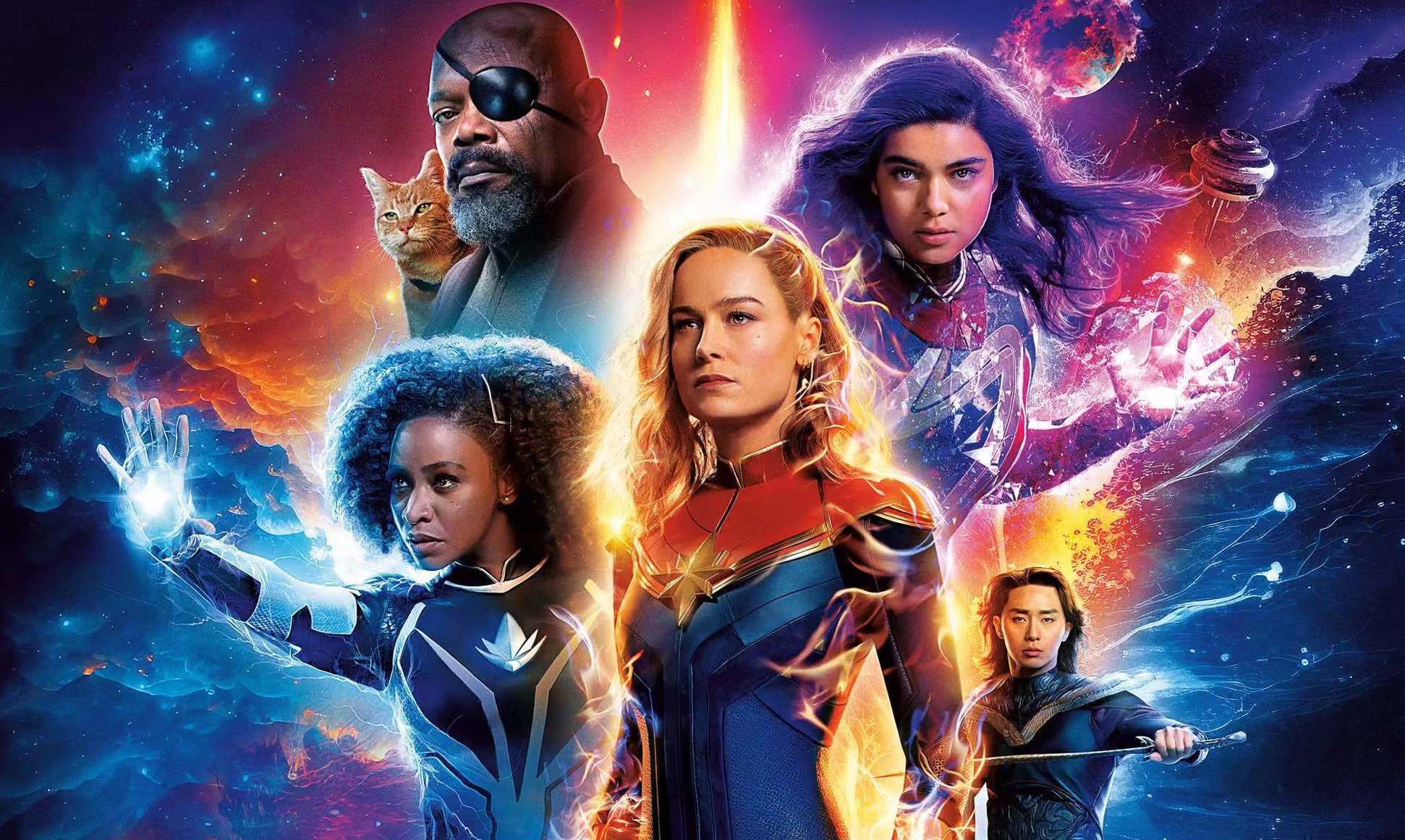The latest film in the Marvel Cinematic Universe, “The Marvels, shuffles embarrassingly onto the screen without any pomp or fanfare, as if aware of its own monotony.
Marvel Studios has recently seen an uncharacteristic streak of box office failures — but “The Marvels,” directed by Nia DaCosta, might be the worst one yet.
“The Marvels” feels less like a complete film and more like an overzealous attempt to bridge gaps in the Marvel storyline.
It’s as if the studio took every criticism levied against them and retorted with a film that was an amalgamation of them all:
“You think that’s bad? Watch this.”
A scarcely logical plot, comically underdeveloped characters and an alienating overreliance on Marvel canon combine to create a “film” more akin to four action sequences strung together with some seasoning.
The plot hinges on a convoluted narrative involving a jump point, a space portal of sorts, and a “Freaky Friday”-esque teleportation swapping mechanic.
Captain Marvel (Brie Larson) is accused of extinguishing the sun that sustained the planets of two alien races: the Kree and the Skrulls. She must fight a Dar-Benn (Zawe Ashton), a Kree-warrior hellbent on getting revenge.
Alongside her are Monica Rambeau (Teyonah Parris), a child in the 2019 film “Captain Marvel” but now full-grown and Kamala Khan (Iman Vellani), a Jersey City teenager and Captain Marvel fangirl with her own powers, nicknamed “Ms. Marvel.”
After Dar-Benn obtains a powerful quantum band, she gains the ability to upset galactic teleportation systems. This somehow affects Captain Marvel, Monica Rambeau, and Ms. Marvel, who all have light-based powers and become entangled, so that whenever their powers are used simultaneously they switch places.
Iman Vellani’s Ms. Marvel is a character developed entirely through television series, leaving those without Disney+ access in the dark about basic premises for the film.
Where did Ms. Marvel even acquire her powers? The average viewer will never know.
The same goes for Monica Rambeau, who’s light-dependent powers developed in the Disney+ series “WandaVision” are glossed over.
The movie’s central premise, the inexplicable dying of a sun caused by Captain Marvel, is both unclear and absurdly introduced.
It’s as though there’s a missing prequel, a ghost film that should exist to make the narrative work.
Der-Benn (is that her name?), the film’s villain, is laughably vapid, a 2D character who takes the crown for the most forgettable Marvel villain of all time.
It’s a disservice to Ashton’s potential, who’s emotional delivery of lines feels out of place for a character the audience barely knows.
Nick Fury (Samuel L. Jackson) is reduced to a mere shadow of his former self, as a foil character serving up flat comedy in place of the impactful leadership we’ve come to expect.
It’s a new dynamic that would work in a satirical 90s sitcom, but feels confusing and disappointing in a Marvel installment.
Despite the heavy lifting needed to compensate for a subpar storyline, veteran actor Brie Larson’s portrayal of Captain Marvel comes across as stiff and unengaged.
In stark contrast, Iman Vellani’s performance Ms. Marvel stands out as a refreshing change of pace.
She injects a much-needed burst of youthful energy into the film, embodying her character perfectly. It’s almost as if she’s actually happy and excited to be on set, and this infectious energy oozes into her portrayal.
Vellani’s performance is strong and engaging, and only barely falls short of redeeming other lackluster cast performances.
Acting and plot design aside, “The Marvels” shows glimmers of potential visually and in action scenes.
The action sequences, though very montage-like, are made fresh by the character swapping mechanic and demonstration of new character’s powers.
However, this mechanic is inconsistently applied. After a scene where the three protagonists train together to master combat when switching positions, we barely see this utilized in the final fight.
This leaves the viewer to wonder if the mechanic was only introduced as a handicap to nerf Captain Marvel’s extreme powers, which ordinarily would allow her to defeat the villain with ease.
The unexplored character swapping mechanic is indicative of a broader problem with the film, of a lack of exploration into intriguing plotlines and dynamics.
Imagine a narrative that challenges Captain Marvel’s heroism, fosters Ms. Marvel’s journey towards independence and self-reliance, or explores the complicated relationship between Captain Marvel and Monica Rambeau in more details.
These threads are dangled in front of us but never woven into the fabric of the story.
It’s a film with enough raw material to forge several decent movies but instead chooses to cram its ideas into a single, muddled narrative.
“The Marvels,” in essence, is a stepping stone, a mere pawn in the grand scheme of the Marvel multiverse narrative. Its ending is what matters, setting the stage for future installments.
I exited the theater not with a sense of fulfillment, not a distaste for bad cinema, but with a lingering sense of pity for a film that could have been a marvel in its own right.


